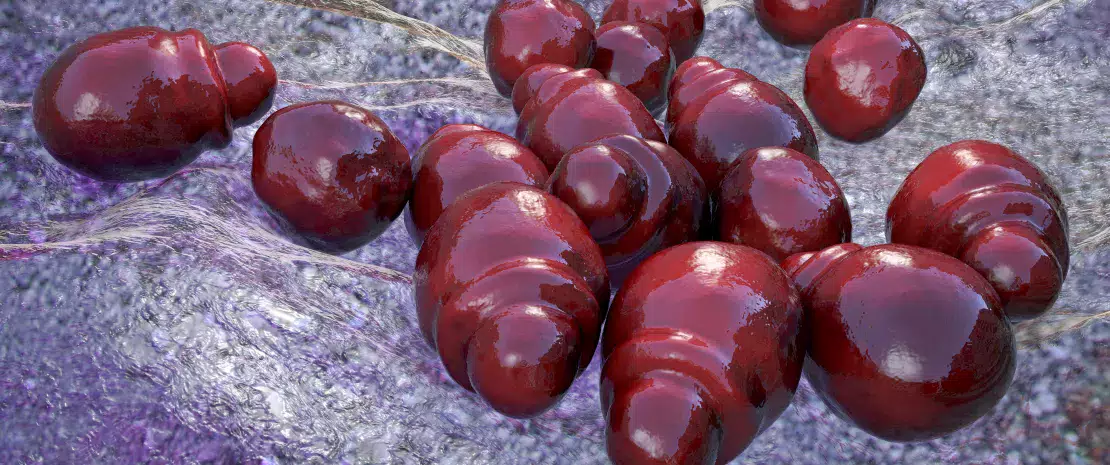Atopic dermatitis: skin mycobiota under the microscope
A reduction in the Malassezia fungus, an increased presence of staphylococci and Candida: severe atopic dermatitis goes hand in hand with a pronounced dysbiosis of the skin’s fungal and bacterial microbiota.
Sources
This article is based on scientific information

About this article
Atopic dermatitis (AD) is a complex and multifactorial inflammatory skin disease in which genetics (abnormalities affecting the gene coding for filaggrin, a protein involved in the skin barrier), the immune system, and microbes play a role. For example, the skin of AD patients generally has an increased abundance of Staphylococcus aureus. But what about fungal communities? A recent study1 has shed some light on this little-known area.
Less Malassezia in severe atopic dermatitis cases
Skin swabs were taken from 16 AD patients (9 cases of mild-to-moderate AD, 7 cases of severe AD) and 16 healthy individuals at four skin sites (antecubital crease, dorsal neck, glabella, and vertex). To observe the course of the disease, the AD patients were sampled at three time points (weeks 0, 2, and 4) and the controls at two time points (weeks 0 and 4).
Prevalence
Atopic dermatitis affects up to 20% of infants and 3% of adults worldwide2, and as much as 10% of adults in developed countries.3
An analysis of the 320 swabs showed that the Malassezia fungus (particularly the species M. restricta and M. globosa) predominated in all subjects, whether healthy or ill. However, in patients suffering from severe AD, this dominance was reduced in favor of fungi such as Candida or Debaryomyces, resulting in greater fungal diversity.
As for bacteria, AD was characterized by lower levels of Cutibacterium and a greater relative abundance of Staphylococcus, particularly S. aureus and S. epidermidis. A higher presence of S. aureus may favor the proliferation of Candida, a synergistic activity between the two microorganisms having previously been shown.
Lastly, no changes in the fungal or bacterial microbiota were observed over the four weeks, regardless of the skin site.
Linked to AD severity
The study also showed a link between skin dysbiosis and the severity of AD: the bacterial and fungal communities of patients with severe AD differed significantly from those of controls and patients with mild-to-moderate forms of the disease. The skin communities of the latter two groups (mild-to-moderate AD and controls) were similar overall, with some distinctions in the bacterial communities (more staphylococci and less cutibacteria in mild-to-moderate AD versus no AD). Thus, a pronounced dysbiosis of the microbiota is characteristic of severe forms of AD, but not of less severe forms.
Skin under triple influences : gut, brain, skin microbiota
2. Ellis SR, Nguyen M, Vaughn AR, et al. The Skin and Gut Microbiome and Its Role in Common Dermatologic Conditions. Microorganisms. 2019;7(11):550.
3. Langan SM, Irvine AD, Weidinger S. Atopic dermatitis. Lancet. 2020 Aug 1;396(10247):345-360.










